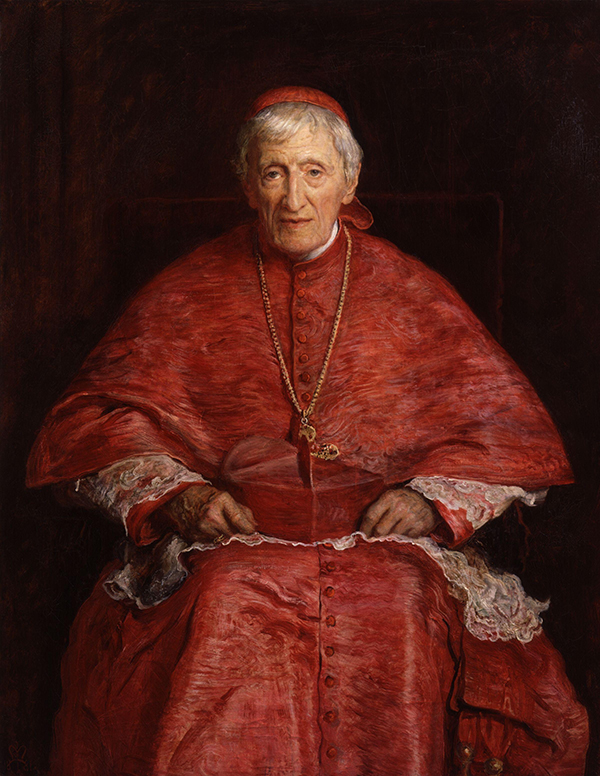
October saint: St. John Henry Newman
Perhaps one of the most famous Catholic converts of the 19th century, Cardinal John Henry Newman has often been called the “absent Father of Vatican II.” His writings, though considered challenging in his day, were very influential in shaping the conciliar documents that were promulgated in the 20th century. Declared venerable by Pope John Paul II in 1991, he was beatified by Pope Benedict XVI in 2010 and canonized by Pope Francis in 2019.
Newman’s faith journey began in his youth when his reading and study led him to embrace the Anglican faith of his parents. Born in London in 1801, he studied at Oxford’s Trinity College, became a tutor at Oriel College (also at Oxford) where he began studying for the priesthood. Ordained an Anglican priest in 1824, he spent 17 years as the vicar of the university church, St. Mary the Virgin.
In 1833, a religious revival in the Anglican Church, which began at Oxford – hence the term, Oxford Movement – was an attempt to restore certain Roman Catholic doctrines and rituals that had been dropped by the Church of England during the Reformation. Principal among its proponents was Father Newman, who edited and co-wrote “Tracts for the Times,” a series of pamphlets designed to help educate people concerning the goals of the Oxford Movement.
However, the more he studied, the more convinced he became that it was the Roman Catholic, rather than the Anglican Church, which was closest to the church that Jesus had envisioned. His conclusions to that effect, published as “Tract 90” in 1843, raised such an outcry in the Church of England that Father Newman resigned his position at St. Mary’s and went into semi-seclusion for the next two years.
In 1845, he was received into full communion with the Catholic Church and in Rome, in 1847, he was ordained a Catholic priest. He joined the Congregation of the Oratory, founded by St. Philip Neri in 1575; upon his return to London, Father Newman proceeded to found Oratory Houses both there and in Birmingham. Based on his work, “The Idea of a University,” he went on to become the first rector of the Catholic University of Dublin.
Though some in the Catholic Church looked on his ideas with some suspicion — namely his thoughts on conscience, religious liberty and the vocation of lay people – they were laid to rest when he was named a Cardinal by Pope Leo XIII in 1879. His motto was “Cor ad cor loquitur” or “Heart speaks to heart.” One of his most famous works, “Apologia pro Vita Sua,” was a religious autobiography in which he defended himself from accusations of duplicity with regard to his conversion.
Cardinal Newman died in 1890, and within three years a Newman Club for Catholic students began at the University of Pennsylvania in Philadelphia. Today, his name is linked to countless such organizations across many college and university campuses.
The saint, whose feast day is Oct. 9, has been called by some the “patron saint of seekers.”
Sources for this article include:
franciscanmedia.org/saint-of-the-day/saint-john-henry-newman
insidethevatican.com
Schreck, Alan. “Catholic Church History from A to Z.” Michigan: Servant Publications, 2002.

